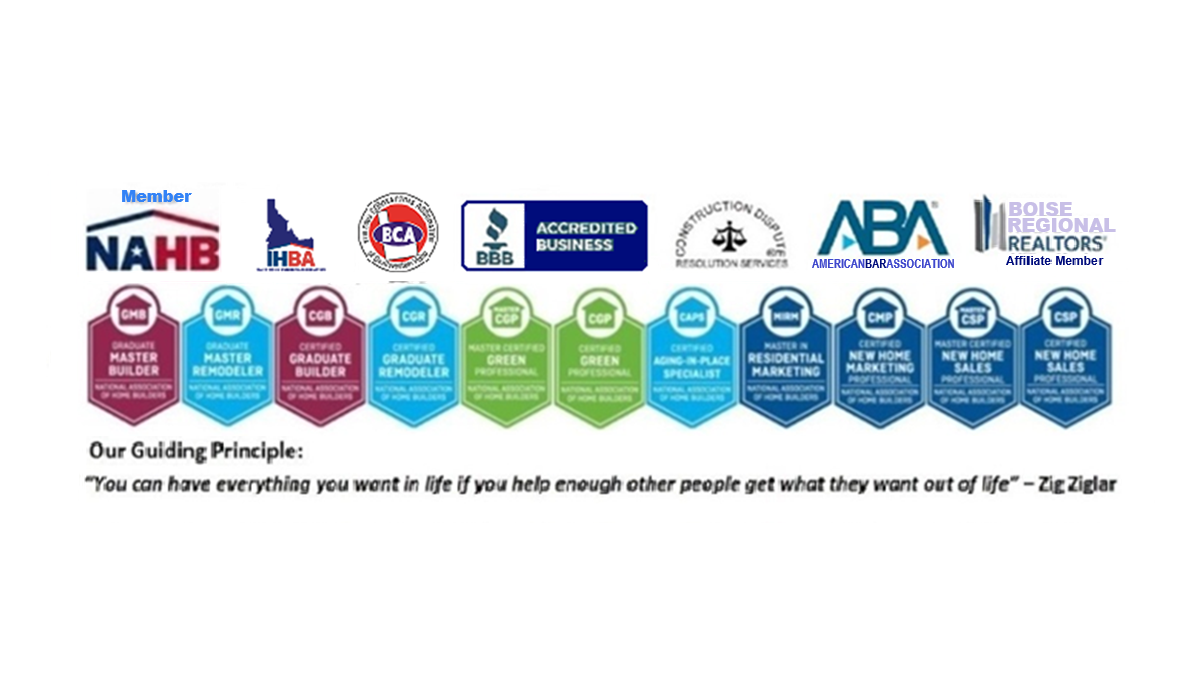The Challenge of Affordable Housing – Part 1 a

As I noted in my last blog, during the Building Contractors Association of Southwestern Idaho Political Action Committee interviews of candidates for public office, the majority of the candidates cited the lack of affordable housing as one of major the issues facing us. During the discussions, a number of the candidates said they understood that it is a supply and demand issue.
The more I thought about it, the more I felt the need to dispel some possible misconceptions regarding the supply and demand issue. A commonly held misconception regarding supply and demand and its impact on pricing is that providers increase prices when demand exceeds supply and decrease prices when supply exceeds demand. While this might be true in some industries, it isn’t true in homebuilding. Builders use the same mark-up percentage on their direct cost (the sticks and bricks) regardless of demand to calculate the sales price. Builders typically use a 15% to 20% markup. Markup is also referred as the expected or planned Gross Profit Margin. The markup covers the Builders operating expenses which include financing expenses, sales and marketing expenses, general and administrative expenses (overhead), and the owner’s compensation, and the Builder’s Net Profit Before Taxes. It also covers Slippage – the variance between the Builder’s expected or planned gross profit margin and what is actually attained for a given period or particular job. Slippage can result from a number of factors including but not limited to unanticipated increases in material and labor costs, delays due to lack of skilled trades or inclement weather, or other factors beyond the Builder’s control. It can also result from increases in financing expenses due to unanticipated delays in selling the home.
The
National Association of Home Builders (NAHB) has been conducting a biennial survey
of its builder members and compiling the findings into a publication titled The
Cost of Doing Business Study since 1970.
As shown in the table below excerpted from the latest study, during that
time, the average Gross Profit for Builders has ranged from 14.4% in 2008 to
23.9% in 1978 with the average being 19.29%. The average Net Profit Before
Taxes for Builders has ranged from minus 3.0% in 2008 to 10.0% in 1991 with the
average being 5.1%. In 2017, the most recent year for which numbers are
available, The
Cost of Doing Business Study, 2019 Edition, the average Net Profit Before Taxes
was 7.6%.
While it is not a factor in how Builders determine their markup, supply and demand is a factor in the direct cost of the home. The biggest impact of supply and demand has been in the finished lot cost. Over the years, NAHB has periodically conducted “construction cost surveys” to collect information from builders on the cost of the various components that go into the sales price of a typical single-family home.
As shown in the tables below, the cost of the lot as a percentage of the sales price was 20.3% on 2009 and 21.5% in 2017. But those percentages don’t tell the whole story. In 2009, the average lot size was approximately 21,879 square feet – approximately ½ acre. In 2017, the average lot size was approximately 11,186 square feet – approximately ¼ acre. The average cost per square foot of a finished lot in 2009 was $3.50. The average cost per square foot of a finished lot in 2017 was approximately $8.22 – an increase of approximately 235%.
While supply and demand is a factor, it is not the only factor impacting the cost of the lot as we will discuss in The Challenge of Affordable Housing Part 2 – The Cost of Regulation






